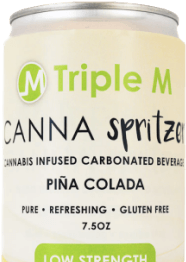What is Cannabis?
When you look up the word “cannabis” in the Encyclopedia Brittanica, here’s what you’ll find:
Cannabis, (genus Cannabis), genus of medicinal, recreational, and fibre plants belonging to the family Cannabaceae. By some classifications, the genus Cannabis comprises a single species, hemp (Cannabis sativa), a stout, aromatic, erect annual herb that originated in Central Asia and is now cultivated worldwide. A tall canelike variety is raised for the production of hemp fibre, while the female plants of a short branchier variety are prized as the more abundant source of the psychoactive substance tetrahydrocannabinol (THC), the active ingredient of marijuana.
There’s a LOT in that definition, so let’s break it down here:
Cannabis is a plant which belongs to the Cannabaceae family of flowering plants. Other plants in this family include Humulus (hops) and Celtis (hackberries). There are a total of approximately 170 plants in this family.
The cannabis plant itself contains three important biologically active compounds: phytocannabinoids, terpenoids, and flavonoids. When activated, these three compounds cause certain effects and vary from strain to strain.
There are hundreds of different cannabis varieties grown all over the world, and each variety produces different effects.
Is cannabis the same thing as marijuana?
Yes, marijuana is simply one of the many slang terms for cannabis. Others include MJ, Mary Jane, ganja, pot, weed, and many more.
How does cannabis work?
Remember those compounds we mentioned: phytocannabinoids, terpenoids, and flavonoids? Those are what scientists believe are most important in how the mind and body reacts to using cannabis.
First, let’s talk about phytocannabinoids. This term refers to the cannabinoids that are found exclusively in the cannabis plant. There are more than 100 phytocannabinoids, but the two most predominant are CBD and THC. Others include CBN, CBG, CBC, and THCV, all of which result in different effects. As more research is done about the effects of cannabis on the human body, we are learning more and more about the potential medicinal benefits and potential uses for these very specific phytocannabinoids.
At Triple M, our products are tested and we include cannabinoid profiles on our labels so that our patients and customers who are searching for a very specific effect or cannabinoid can identify it right on our packaging.
The effects of cannabis are subjective and differ from person to person, but generally speaking we find that THC-dominant cannabis products produce a “head high” with euphoric effects, while CBD-dominant products do not have psychoactive effects but patients report that they have medicinal benefits for a range of conditions.
Both CBD and THC have a chemical structure that is similar to that found in the human body’s natural endocannabinoid system. The endocannabinoid system is made up of neurotransmitters that trigger reactions in the body and brain.
Simply put, the cannabinoids in marijuana products are what naturally create.

